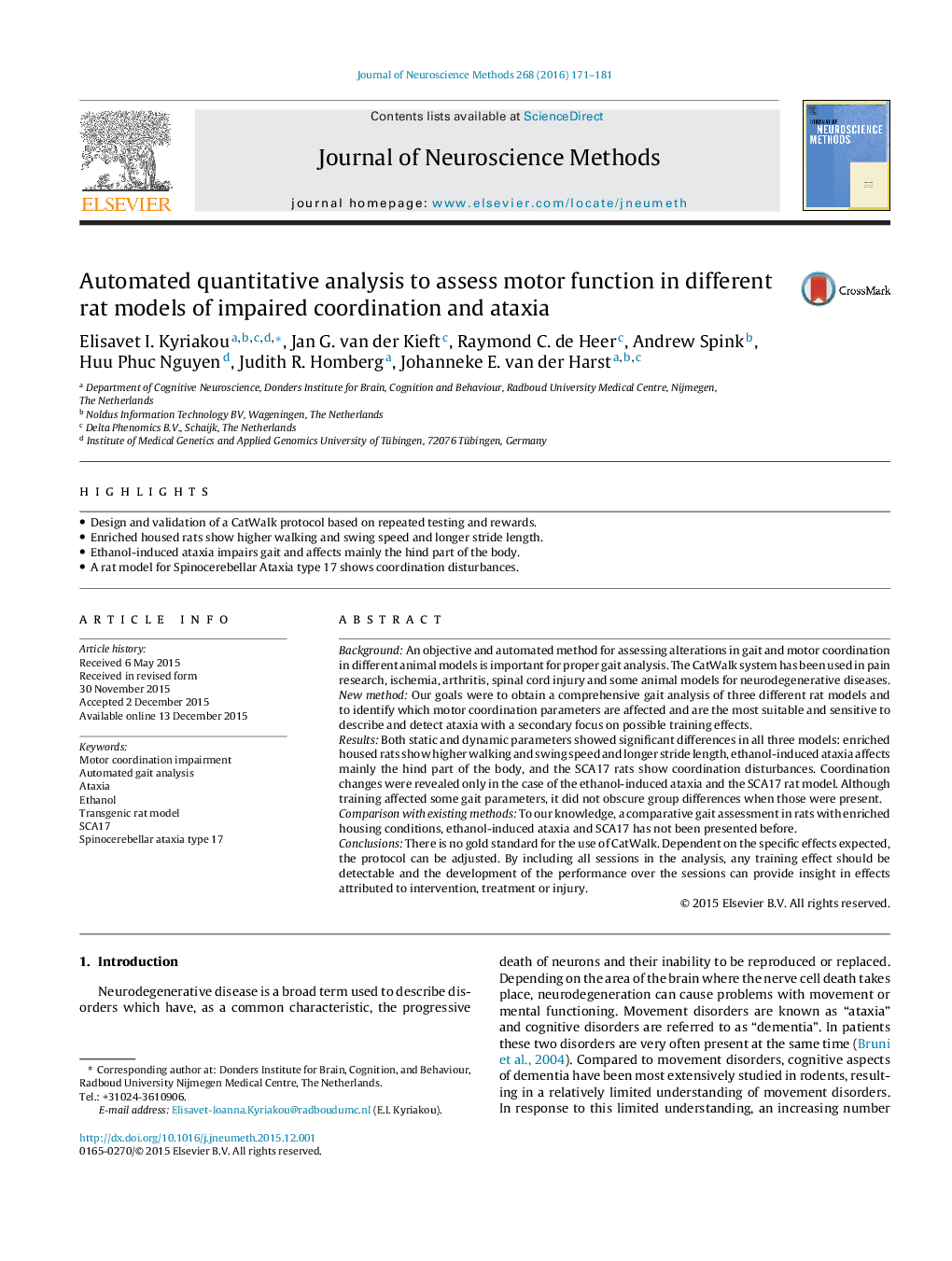| Article ID | Journal | Published Year | Pages | File Type |
|---|---|---|---|---|
| 6267667 | Journal of Neuroscience Methods | 2016 | 11 Pages |
â¢Design and validation of a CatWalk protocol based on repeated testing and rewards.â¢Enriched housed rats show higher walking and swing speed and longer stride length.â¢Ethanol-induced ataxia impairs gait and affects mainly the hind part of the body.â¢A rat model for Spinocerebellar Ataxia type 17 shows coordination disturbances.
BackgroundAn objective and automated method for assessing alterations in gait and motor coordination in different animal models is important for proper gait analysis. The CatWalk system has been used in pain research, ischemia, arthritis, spinal cord injury and some animal models for neurodegenerative diseases.New methodOur goals were to obtain a comprehensive gait analysis of three different rat models and to identify which motor coordination parameters are affected and are the most suitable and sensitive to describe and detect ataxia with a secondary focus on possible training effects.ResultsBoth static and dynamic parameters showed significant differences in all three models: enriched housed rats show higher walking and swing speed and longer stride length, ethanol-induced ataxia affects mainly the hind part of the body, and the SCA17 rats show coordination disturbances. Coordination changes were revealed only in the case of the ethanol-induced ataxia and the SCA17 rat model. Although training affected some gait parameters, it did not obscure group differences when those were present.Comparison with existing methodsTo our knowledge, a comparative gait assessment in rats with enriched housing conditions, ethanol-induced ataxia and SCA17 has not been presented before.ConclusionsThere is no gold standard for the use of CatWalk. Dependent on the specific effects expected, the protocol can be adjusted. By including all sessions in the analysis, any training effect should be detectable and the development of the performance over the sessions can provide insight in effects attributed to intervention, treatment or injury.
